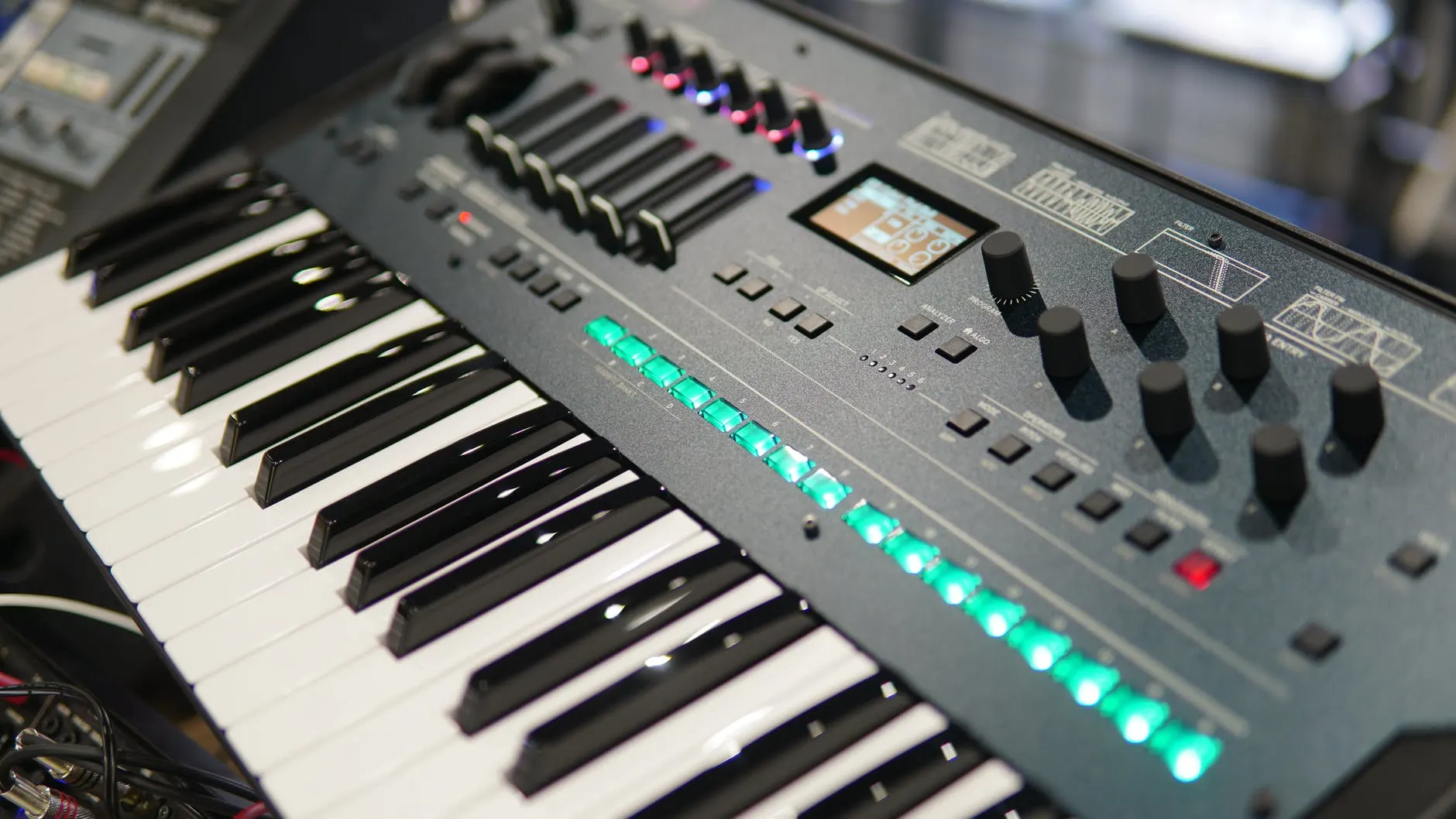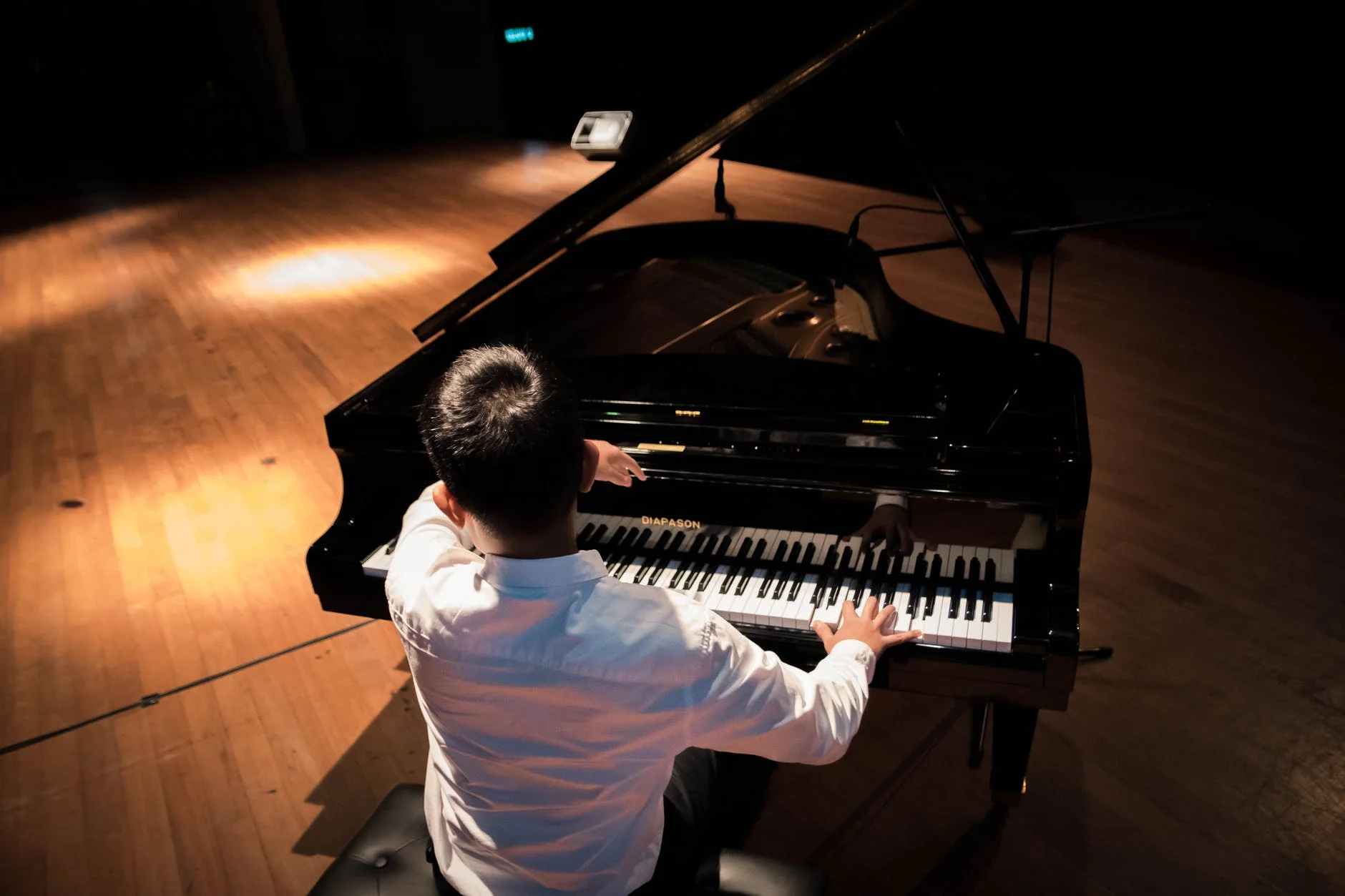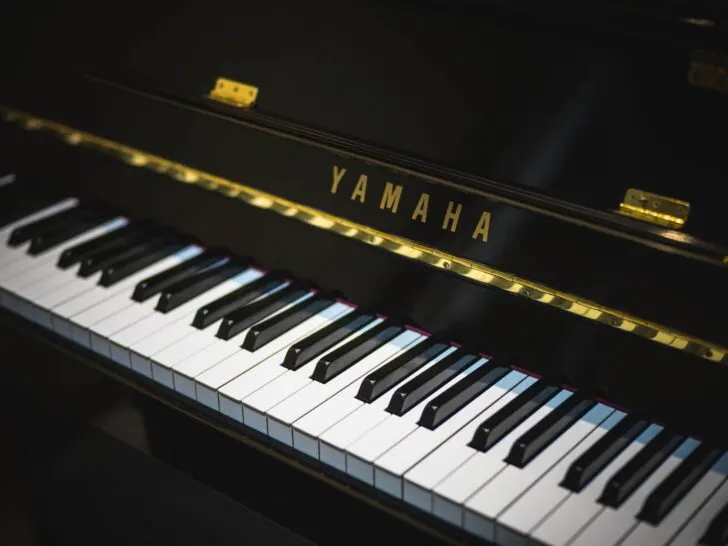Cue the music if you’re seeking a quick method to change your mood.
According to a study, it enhances blood flow in the same manner that statins do, reduces stress hormones like cortisol, and relieves pain. Music can even boost post-surgery results if you listen to it before an operation.
Whether it might be a stressful day at work or a tough morning after accomplishing all the chores, a piece of calming music can be our resort to calm our nerves.
So, if you’ve been searching for a means to relax, unwind, and get your mind off your everyday troubles – as well as learn or re-learn a great and creative activity that you’ll be able to do for the rest of your life – learning to play the piano might be just what you’re looking for!
A grand piano refers to a type of piano that uses strings to play its notes. It is big in size and quite loud, which is why it is often used to play in musical performances. A pianoforte on the other hand is just a different term for pianos.

But before anything else, let’s first understand what a piano is, what are its types, and how it works. Without further ado, let’s do it!
Piano: A string of music wires
The piano is a keyboard instrument that makes music by striking strings with hammers, and it is distinguished by its wide range and ability to freely play chords. It is a widely popular musical instrument.

The piano has long been an unparalleled avenue for anyone seeking to express their creativity, create a joyful atmosphere, or simply escape their daily lives. More evidence of the benefits of playing the piano has emerged in recent years, relating music creating to a healthy body, mind, and life.
What seems to be interesting about this musical instrument is— it composes of wire strings that are hit by felt-covered hammers that are controlled by a keyboard.
It is laminated for strength, stability, and lifespan and is composed of hardwood (usually hard maple or beech). Piano strings which are also known as piano wires, are constructed of high carbon steel and must withstand years of tremendous strain and heavy impacts.
When a player touches a piano key, a felted hammer strikes a string. This hammer stroke causes the string to vibrate, resulting in the contemporary piano sound we are familiar with.
What are the types of Pianos?
Pianos have seven unique types which perform distinct forms and functions.
Furthermore, pianos can be broken down into three categories:
- Grand piano
- Upright piano
- Digital piano
Let’s take a look at them one by one to differentiate them from one another.
Baby Grand Piano
The baby grand piano is built to generate a big sound in a compact space.
Most baby grands range in length from five to seven feet, making them suitable for most living rooms. A long baby grand piano is sometimes referred to as a parlor grand or medium grand.
Concert Grand Piano
A concert grand is a bigger-than-life version of a baby grand, with longer strings, a larger soundboard, and a more resonant sound.
Concert grand pianos may have been heard as part of a symphony orchestra, notably as part of a piano concerto with a featured soloist. As an official studio piano, large recording studios may maintain a concert grand on hand.
Upright Piano
A concert grand is a larger-than-life version of a baby grand, with longer strings, a larger soundboard, and a richer tone.
Concert grand pianos have been heard as part of symphony orchestras, most notably in a piano concerto with a featured soloist. Large recording studios may have a concert grand on standby as an official studio piano.
Spinet
A spinet piano is a scaled-down model of an upright piano. It has the same construction but is just around three feet tall.
They have significant drawbacks as compared to console and studio upright pianos. The height of a spinet piano distinguishes it. Spinets are 40′′ and shorter, consoles are 41′′ – 44′′ tall, and studio uprights are 45′′ and taller. The highest studio uprights (48′′+) are sometimes referred to as professional or upright grand.
Console Piano
A console piano sits between a spinet and a traditional upright piano.
Most are between 40 and 44 inches tall. They are less expensive than spinets and smaller than typical uprights.
Player Piano
A player piano is a type of automatic piano.
Traditionally, the owner of a player piano would program it by inserting a piano roll—a punch-hole version of sheet music. Player pianos are becoming increasingly rare, and they may now be programmed digitally without the use of a real piano roll.
Electric Piano
This musical instrument, often known as a digital piano or synthesizer, mimics the timbre of an acoustic piano but creates sounds electronically rather than using vibrating strings.

Using a digital programming language, this type of piano can control MIDI devices and generate symphonic sounds.
Pianoforte―Is it Piano’s original name?
Fortepiano means loud-soft in Italian, much as pianoforte, the formal term for the contemporary piano, means soft-loud. Both are acronyms of Bartolomeo Cristofori’s original name for his invention— gravicembalo col piano e forte, which translates as harpsichord with soft and loud in Italian.
Although the term fortepiano has a more specialized meaning, it does not exclude the use of the more generic term piano to refer to the same instrument. The fortepiano is used in situations where the particular identity of the instrument is vital, such as a fortepiano concert by Malcolm Bilson.
What does a Pianoforte sound like?
The first pianos still had a harpsichord-like twang, but we can also hear the wooden thumps, rumbles, and tinkling highs of modern pianos.
Cristofori dubbed his creation the gravicembalo col piano et forte, which translates as a keyboard instrument with gentle and loud sounds. This was quickly simplified to just pianoforte. It’s remarkable how the term “soft” evolved to be the sole label for it.
For all of its grandeur and tremendous capacity, it’s the piano’s gentleness that so frequently draws our attention—its ability to withdraw its punches and glide with subtle elegance.
What is Grand Piano?
A grand piano is a big piano with strings that are laid horizontally on the floor. Grand pianos are mostly utilized for performing performances and recording.

A grand piano is just a huge form of pianoforte that, due to its potential loudness, is appropriate and suitable for playing in front of a larger audience.
Grand Piano VS. Pianoforte: How do they differ?
You might be thinking that they sound different, but these two terms are basically about pianos but referring to a different type.
Pianoforte is another term for piano, while the term grand piano refers to a type of piano.
To give you a better understanding of the two, here’s a table about their keys, strings, and octave.
| Piano | Keys | Strings | Octave |
| Piano Forte | 88 | 220-240 | 7 |
| Grand Piano | 88 | 230 | 7 |
Curious about what’s the difference between their sounds? Deep dive about what the sounds like in this video.
Final thoughts
A pianoforte can be the ideal instrument you can have in your home since the strings are stretched vertically making the piano more compact—allowing you to play in a smaller space.
The grand piano, on the other hand, keeps the form of the original pianoforte, with the strings strung horizontally, and has a larger capacity for expressiveness.
Other Articles
- Differences among Stacks, Racks, and Bands- (The right term)
- Forza Horizon Vs. Forza Motorsports (A detailed comparison)
- The Difference between Nani Desu Ka and Nani Sore- (Grammatically correct)
- What Is The Difference Between an EMT and an EMR?
- PayPal FNF or GNS (Which One to Use?)
Click here to see the differences in a more summarized manner.

